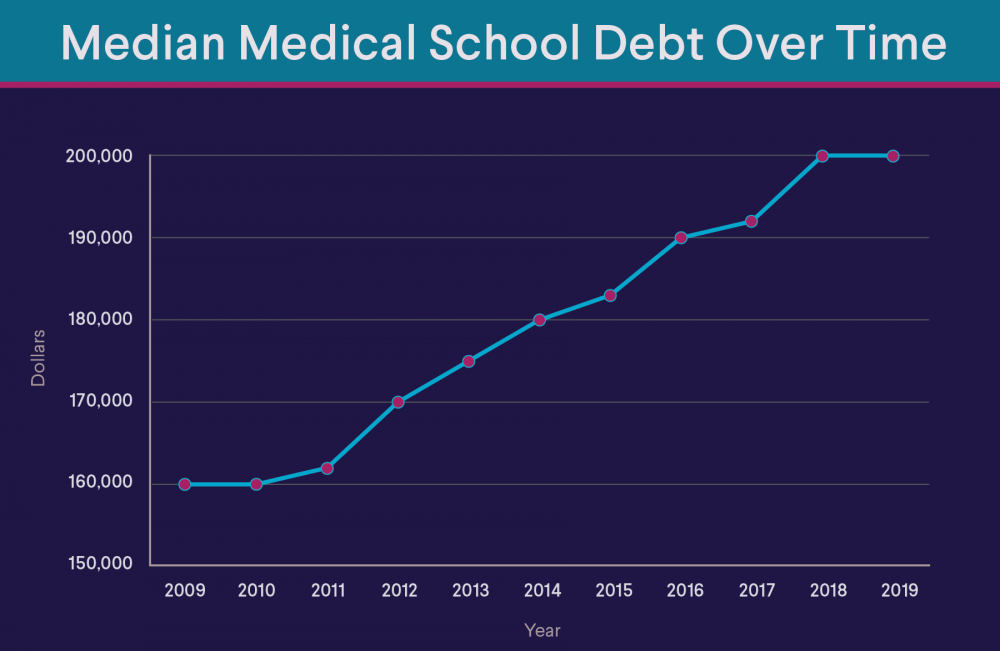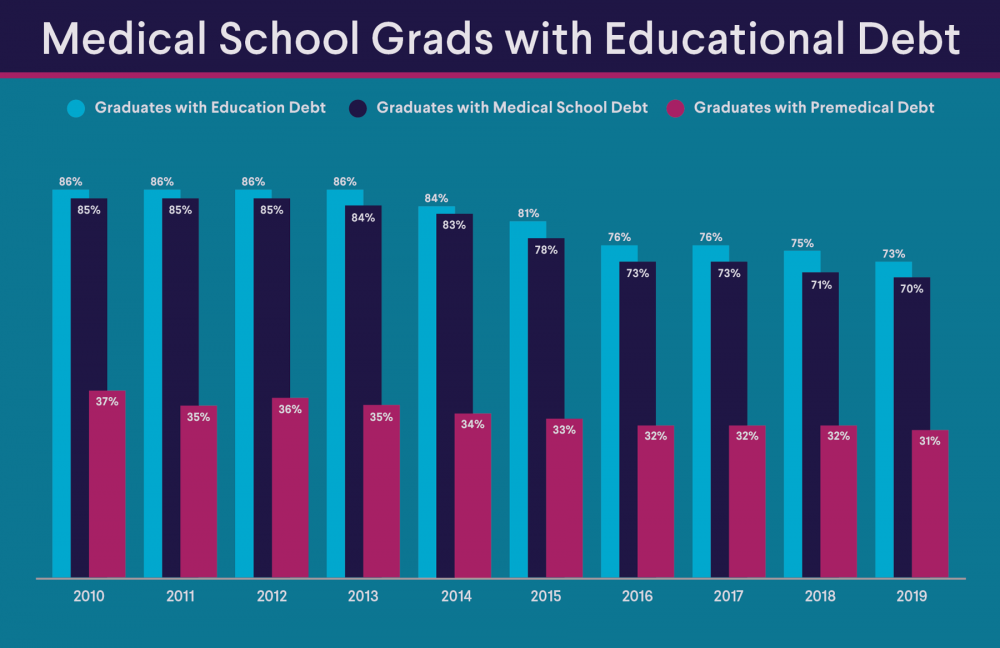6 Strategies to Pay off Student Loans Quickly
Life can get expensive. When you factor in things like rent or mortgage, groceries, child care expenses, transportation costs, and more, it adds up quickly. And for more than 43 million Americans, their monthly budget also includes student loan payments.
If you’re able to lower or eliminate student loan debt, you’ll have more money at your disposal. So what’s the fastest way to pay off student loans? There’s no one right answer, but these tips could help you hasten repayment so you can focus on other financial goals.
Six Tips to Accelerate Student Loan Repayment
1. Putting Extra Toward the Principal
One of the most effective ways to get ahead of student loan debt is to pay more than the monthly minimum. There are no prepayment penalties for federal or private student loans, so it might be one of the fastest ways to shrink your debt.
As a bonus, when you put extra money toward the principal loan balance, you’re also shaving off the total cost of interest you may otherwise pay over the life of the loan.
You might be surprised how much an additional monthly $50 payment can trim off your debt. If your monthly budgets are too tight to make an additional monthly contribution, you might consider increasing your payments every other month or quarterly.
To make the most of prepayments, the additional payments should be applied to the loan’s principal. Some loan servicers may apply a payment to the next month’s payment instead of deducting it from the loan balance. You may want to contact your loan servicer to make sure prepayments are applied to the principal.
2. Making a Lump Sum Payment
If making extra monthly payments to your student loans is out of the question, consider making a lump sum payment. That means making use of “found money.” Instead of treating a tax refund, financial gifts, bonuses, or a raise at work like “fun money,” you could use it to double down on your debt.
It may also be a good time to review your spending habits and see where you might be able to find some extra cash. Even minor adjustments like taking public transportation instead of a cab or finding street parking instead of paying at a garage could add up.
When you find areas in your spending to cut back, consider adding that money to an account dedicated to your student loan repayments.
3. Finding a Side Hustle
If you’re still searching for how to pay off student debt faster, you could try finding an additional source of income and putting that money toward debt.
What are your skills, hobbies, and interests? While it may take perseverance to find the right side hustle, it could wind up being one of the fastest ways to pay off student loans.
There are apps that offer flexible, part-time side hustles. If you’re crafty, you could try selling your creations at an online marketplace. If you’re a photographer, writer, or editor, you could try finding a freelance gig. Once you get your side hustle going, the additional income could be regularly put toward extra student loan payments.
Recommended: 15 Low-Cost Side Hustles
4. Getting Help Paying Off Your Loan
You could speed up loan repayment if you can find a way to have someone else contribute, such as:
Seeking an employer perk. Before the coronavirus pandemic, an estimated 8% of employers offered student loan repayment assistance as a benefit. The CARES Act of 2020 gave companies an incentive to offer the benefit, which was then extended through 2025.
Employers can contribute up to $5,250 per employee each year toward qualified education expenses, such as student loan assistance, without raising the worker’s gross taxable income.
Volunteering. Some volunteer opportunities might ease your student loan balance. For example, members of the Shared Harvest Fund can get a stipend applied to their student loans if they match up with a nonprofit organization that needs their talents.
You can choose the cause you like or filter by project. For instance, if you’re a lawyer, you can consult with a nonprofit organization looking to change its structure. A social media whiz can help set strategy for a therapy-pet agency.
Asking. Your family members and friends want you to succeed, so why not ask them to contribute to your student loan instead of buying something you don’t really need on your birthday? One site, GiftofCollege.com, lets you set up a profile, link to a student loan, and ask for contributions via social media.
5. Rolling Out the Debt Snowball Method
When it comes to finding the fastest way to pay off student loans, you could try using the debt snowball method. Here’s how that works.
First, take a look at your loans and focus on the balances. While you should be making at least the minimum monthly payment on all your loans, the debt snowball method has you put any additional money toward the loan with the smallest balance first.
Once that loan is paid off, you’d use the money you were paying on the old loan payment amount and roll it to the next smallest debt. The idea is to continue using this method until all of your loans are paid off. Each time you pay off a loan, it feels like a win that helps you see the progress you’re making.
6. Refinancing or Consolidating Loans
Refinancing your student loans with a private lender means taking out a new loan that pays off your existing loans and has a new interest rate, term, and monthly payment.
Depending on your credit score and income (among other factors), you may be able to secure a lower interest rate when you refinance your student loans with a private lender — which means the loan may accrue less interest over time (depending on the loan’s term). Lenders generally offer both fixed-rate and variable-rate loans, and often give you the option to extend or shorten your repayment term.
If you have exclusively federal student loans, you could consolidate them into a Direct Consolidation Loan, with one monthly payment. The new, fixed interest rate will be the weighted average of your existing interest rates rounded up to the nearest one-eighth of a percentage point.
Consolidation can lower your monthly payment by giving you up to 30 years to repay your loans, but a longer term means more payments and more interest.
Before refinancing federal student loans, it’s best to weigh the borrower protections of those loans against refinancing with a private lender, who can’t offer the same federal benefits. For example, if you are enrolled in an income-driven repayment plan or are applying for Public Service Loan Forgiveness, refinancing might not be your best option. When you consolidate your loans, you keep your access to federal benefits; when you refinance your loans, you lose this access.
The Takeaway
Wondering how to pay off student loans quickly? There are a few strategies to explore. One or more of these six suggestions could be the ticket to chipping away at the debt faster.
To see what refinancing student loans with SoFi could mean for your finances, you may want to look at estimates with this student loan refinancing calculator and then check your rate.
SoFi offers competitive fixed or variable rates, no application or origination fees, and an easy online application.
SoFi Student Loan Refinance
SoFi Student Loans are originated by SoFi Bank, N.A. Member FDIC. NMLS #696891. (www.nmlsconsumeraccess.org). SoFi Student Loan Refinance Loans are private loans and do not have the same repayment options that the federal loan program offers, or may become available, such as Public Service Loan Forgiveness, Income-Based Repayment, Income-Contingent Repayment, PAYE or SAVE. Additional terms and conditions apply. Lowest rates reserved for the most creditworthy borrowers. For additional product-specific legal and licensing information, see SoFi.com/legal.
SoFi Loan Products
SoFi loans are originated by SoFi Bank, N.A., NMLS #696891 (Member FDIC). For additional product-specific legal and licensing information, see SoFi.com/legal. Equal Housing Lender.
Disclaimer: Many factors affect your credit scores and the interest rates you may receive. SoFi is not a Credit Repair Organization as defined under federal or state law, including the Credit Repair Organizations Act. SoFi does not provide “credit repair” services or advice or assistance regarding “rebuilding” or “improving” your credit record, credit history, or credit rating. For details, see the FTC’s website .
Non affiliation: SoFi isn’t affiliated with any of the companies highlighted in this article.
Financial Tips & Strategies: The tips provided on this website are of a general nature and do not take into account your specific objectives, financial situation, and needs. You should always consider their appropriateness given your own circumstances.
SOSL0423004 Read more






